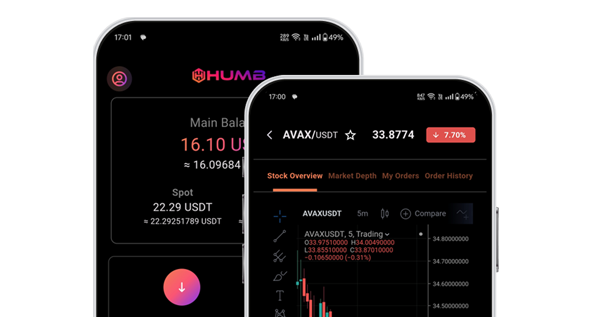Importance of Tokenization Framework in Healthcare
Among emerging technologies, blockchain and tokenization stand out as most promising and revolutionary as they are changing the way we think about money, data and even healthcare. Blockchain enables transparent, secure, and decentralized record-keeping, while tokenization converts real-world assets into digital tokens that can be easily transferred, owned, or exchanged.
When it comes to healthcare, tokenization holds powerful benefits for doctors, hospitals, labs, insurers, patients, and anyone connected to the healthcare ecosystem. This means patient data can be shared securely, services can be accessed through digital tokens, and even medical research can be funded in innovative ways.
For professionals from the healthcare domain, terms like blockchain, tokenization and tokenization framework can often feel overwhelming. Unlike medical terminology, these are concepts born in the tech and finance worlds making them harder to grasp without simplified explanations or relatable examples. In this article I am trying to explain tokenization and the importance of tokenization framework in the simplest manner possible because it holds the key to solving long-standing challenges like data silos, patient ownership, and system inefficiencies and a step towards creating a future-ready, equitable, and secure healthcare ecosystem.
What is Tokenization?
Let us try and understand in simple terms what is tokenization. Tokenization is the process of turning real-world items like services, medical records, data or even revenue streams into secure digital assets called tokens. These tokens live on a secure technology platform called the blockchain, which keeps records transparent, traceable, and tamper-proof. In the context of healthcare, these tokens can represent:
- Access to medical services (consultations, diagnostics)
- Ownership of health data or clinical trial participation
- Future revenue streams of clinics or labs
- Wellness incentives or insurance premiums
Tokenization will be the foundation on which innovation, access, and equity are built and a path for the healthcare industry to start moving towards Healthcare 6.0.
Importance of Tokenization Framework
A tokenization framework is a structured approach that defines how real-world assets, rights, or services are digitally represented as tokens on a blockchain. It provides the rules, standards, and governance mechanisms needed to ensure that token creation, distribution, management, and transfer are secure, compliant, and interoperable. By standardizing the process, a tokenization framework enables greater transparency, traceability and trust in digital transactions. Whether it’s for financial assets, intellectual property or digital services, the framework acts as the foundation that bridges traditional systems with the decentralized digital economy, making value more accessible, divisible, and liquid.
A tokenization framework becomes critically important in healthcare because of the sector’s unique combination of high-value data, sensitive patient information, complex stakeholder relationships and strict regulatory requirements. Moreover the tokenization framework needs to be aligned to the healthcare industry in order to meet the complex, high-stake requirements of healthcare:
These weightages can be tied to token issuance — for example:
- Data Sensitivity and Privacy: Healthcare involves personal health information (PHI) that is extremely sensitive. Tokenization in must comply with strict privacy regulations like HIPAA, GDPR, DPDP Act and consent management specially when it comes to sharing data.
- Regulatory and Ethical Compliance: Healthcare is one of the most regulated industries and Tokens representing health data or services must comply with clinical, legal, and insurance standards.
- Interoperability with Existing Standards: A healthcare-aligned framework must ensure that tokens are compatible with data standards like HL7 FHIR and supports seamless integration into EHRs, hospital systems, and insurance platforms.
- Patient Empowerment: A healthcare-aligned tokenization framework should empower patients giving them ownership of their data tokens, allowing them to decide who can access their data, under what terms, and how they are rewarded.
The HUMB 8 layer Tokenization Framework -
The HUMB Tokenization Framework is a domain-specific, full-stack model, purpose-built for healthcare. It ensures that data integrity, stakeholder trust, regulatory compliance, and monetization are all handled cohesively right from data capture to token lifecycle to value exchange. It empowers the healthcare ecosystem to embrace Healthcare 6.0, and move towards a decentralized, data-driven, and patient-centered healthcare ecosystem.
Tokenization framework layers -
| Layer | Layer Name | Description |
|---|---|---|
| Layer 1 | Data Layer (Off-Chain Storage) |
This layer securely stores raw healthcare data (e.g., EHRs, lab results, imaging files) off-chain in compliant storage systems.
Only pointers, hashes, or metadata are stored on-chain to maintain data privacy and reduce blockchain load.
|
| Layer 2 | Tokenization Layer |
At this layer, healthcare data, services, or outcomes are converted into digital tokens (fungible or non-fungible).
Each token carries embedded logic regarding its access rights, purpose, and value.
|
| Layer 3 | Blockchain Layer |
This layer provides the decentralized ledger infrastructure to securely record transactions, ensure auditability,
and enable smart contract execution.
|
| Layer 4 | Marketplace and Exchange Layer |
A built-in layer where healthcare tokens can be listed, discovered, and traded either for utility, research access,
or reward redemption on HUMN Exchange.
|
| Layer 5 | Identity and Access Management Layer |
This layer ensures that only verified identities (patients, providers, researchers) can access tokens or initiate transactions.
|
| Layer 6 | Incentivization Layer |
This is where the native token (HUMN) comes in, powering incentives for all stakeholders (patients, doctors, researchers, data contributors).
|
| Layer 7 | Analytics Layer |
This layer aggregates data usage, token activity, and stakeholder engagement metrics to provide real-time dashboards and predictive insights.
|
| Layer 8 | Governance and Compliance Layer |
Defines the policies, smart contracts, and audit trails that govern the entire tokenized ecosystem.
|
How HUMB Tokenization Framework Meets Healthcare’s Unique Needs -
| Requirement | How HUMN Tokenization Framework Addresses It |
|---|---|
| Data Privacy & Sensitivity | Off-chain storage + on-chain access tokens ensure privacy and selective data sharing |
| Regulatory Compliance | Built-in governance, consent, and role-based access control aligned with laws (HIPAA, DPDP, etc.) |
| Stakeholder Diversity | Custom tokens for patients, hospitals, researchers, insurers—each with specific utilities |
| Monetization & Incentivization | $HUMB and other innovative healthcare token rewards for participation, contribution, and engagement |
| Data Interoperability | HL7 FHIR and healthcare standards integration in token metadata |
| Trust & Transparency | Blockchain-backed logging, analytics, and identity verification |
| Innovation Enablement | Enables marketplaces for research data, NFTs for medical IP, and trial participation |
Conclusion: A Foundation for the Future
As HUMB envisages Healthcare 6.0 where care is personalized, predictive, and digital-first; a healthcare focused tokenization framework is the foundation we need.
It turns complex healthcare services into manageable digital assets, ensures patient data is respected and rewarded, and opens up new ways to fund, deliver, and scale healthcare.
Whether you’re a clinic owner, lab director, wellness startup, or healthcare policymaker the question is no longer if we need tokenization, but how soon we can adopt the right tokenization framework to lead this change.
HUMB Exchange is a fully regulated healthcare focused crypto exchange platform that lists innovative healthcare tokens and top cryptocurrency pairs for trading on HUMB use the following link - Register on HUMB
About the Author: Vishwajeet Jathar is one of the Co-Founders of HUMB - Healthcare focused Crypto Exchange Platform. With a passion for blockchain technology and its applications in healthcare, Vishwajeet is dedicated to exploring innovative solutions that bridge the gap between these two transformative fields.
Disclaimer: The views and opinions expressed in this article are those of the author and do not necessarily reflect the official policy or position of any organization. This article is intended for informational purposes only and should not be construed as advice.



